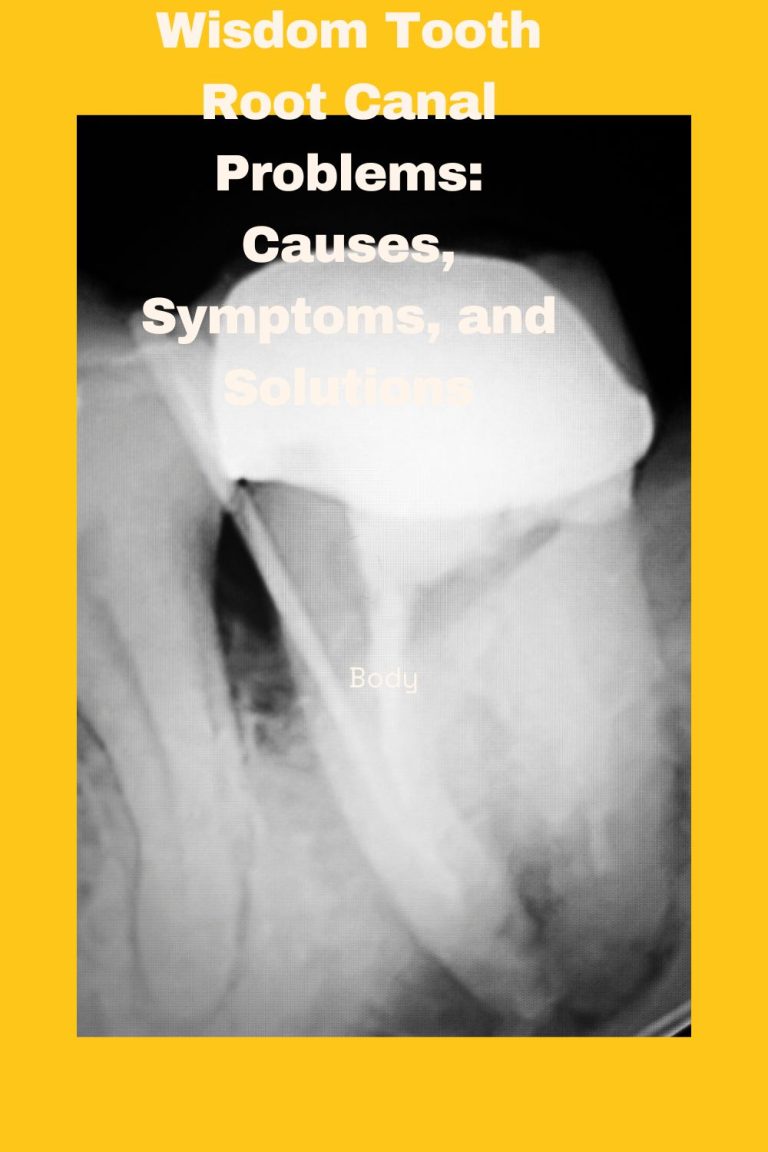Success Rate of Root Canal Retreatment
The success rate of root canal retreatment varies depending on various factors and individual cases. However, it is generally estimated to be around 80-90%.
Root canal retreatment is a dental procedure performed when a previous root canal treatment has failed or needs to be repeated. This can occur due to various reasons such as persistent infection, new decay, or fractured dental restorations. The success rate of root canal retreatment is influenced by factors like the complexity of the case, the skill of the dentist, and patient compliance with post-treatment care.
In most cases, the success rate falls within the range of 80-90%, indicating a high probability of resolving the underlying issue and restoring the tooth’s health. However, it is important to consult with a dentist to assess the individual circumstances and determine the best course of action.
Understanding Root Canal Retreatment: Why It Is Necessary
Understanding root canal retreatment: why it is necessary root canal retreatment, also known as endodontic retreatment, involves the re-treatment of a tooth that has previously undergone root canal therapy. It is necessary when a tooth that has previously been treated does not heal properly or exhibits signs of infection.
So, what exactly is root canal retreatment? It is a procedure that involves removing the existing root canal filling material, cleansing the canals, and then re-filling them to ensure that the infection is cleared and the tooth can heal properly.
But why do root canals sometimes fail? There are various reasons, including missed canals, complicated canal anatomy, persistent infection, or the development of new problems over time. Common symptoms indicating retreatment is needed include persistent pain, swelling, recurring abscesses, or the return of symptoms that had previously subsided.
By understanding the importance of root canal retreatment and recognizing the signs, individuals can ensure the success of their dental health and overall well-being.
Exploring The Success Rate Of Root Canal Retreatment
Exploring the success rate of root canal retreatment reveals some interesting statistical data. Various factors can impact this rate, such as the complexity of the case or the experience of the endodontist. Retreatment is often the best option when a previous root canal treatment has failed or a new issue arises.
It allows the dentist to address any remaining infection or persisting symptoms. With modern advancements in techniques and technology, the success rate of retreatment is quite high. By carefully analyzing the case and providing the necessary treatment, endodontists aim to achieve optimal outcomes for their patients.
Root canal retreatment offers a second chance for saving the natural tooth, preventing the need for extraction and potential tooth replacement options. Understanding the success rate of retreatment can provide reassurance to those in need of this procedure.
Challenges In Root Canal Retreatment
Root canal retreatment encounters challenges, like navigating intricate canal anatomy, managing persistent infections, and dealing with broken instruments. These obstacles require careful attention and expertise for successful treatment. The intricate canal anatomy demands precision and skill to effectively clean and seal the canals.
Persistent infections pose a threat and need to be thoroughly addressed to ensure complete healing. Fractured or broken instruments can make retreatment complex and require delicate removal techniques. A comprehensive understanding of these challenges is crucial for endodontists to achieve a high success rate in root canal retreatment.
With proper techniques and the right approach, these obstacles can be overcome, leading to successful retreatment outcomes and improved oral health for patients.
Unveiling The Procedure: How Root Canal Retreatment Is Done
Root canal retreatment is a procedure that aims to address unsuccessful or unresolved root canals. Through advanced endodontic techniques and technologies, this process can be performed effectively. Proper diagnosis is essential before proceeding with retreatment. By carefully breaking down the steps involved in the retreatment process, dentists ensure a high success rate.
This allows for the thorough removal of any infected or damaged materials. It is crucial to avoid commonly overused phrases and instead focus on delivering clear, concise information. This blog post provides valuable insights into the success rate and the intricate procedure of root canal retreatment.
Stay tuned to learn more about this dental solution.
Exploring Different Retreatment Techniques
2.2 Materials And Medications Used In Root Canal Retreatment
Root canal retreatment has a success rate that is influenced by various factors. Specialized files and burs are used to prepare the canals, ensuring optimal cleaning and shaping. Irrigation solutions effectively eliminate bacteria and debris, reducing the risk of reinfection.
Sealing the canals with restorative materials is crucial for long-term success. These materials create a hermetic seal, preventing bacteria from re-entering the treated root canals. The success rate of root canal retreatment is also influenced by the skill and expertise of the endodontist performing the procedure.
Careful attention to detail and a thorough understanding of the factors affecting retreatment contribute to a higher success rate. Regular follow-up visits and proper oral hygiene practices after retreatment further improve the chances of success. Trusting a qualified and experienced endodontist is essential for ensuring the best possible outcome.
Key Factors Contributing To The Success Rate Of Root Canal Retreatment
The success rate of root canal retreatment is influenced by several key factors. One crucial aspect is the importance of proper assessment and diagnosis. This initial step ensures that any issues missed during the initial treatment are identified and addressed.
Another crucial factor is the skill and experience of the endodontist performing the retreatment. Their expertise in handling complex cases and navigating potential challenges greatly affects the success of the procedure. Additionally, effective disinfection and obturation techniques play a significant role as well.
Thoroughly disinfecting the root canal system and ensuring proper sealing of the canals are essential to prevent reinfection and promote successful healing. When these key factors are carefully considered and implemented, the success rate of root canal retreatment can be significantly improved.
Advancements In Endodontic Technology And Equipment
Advancements in endodontic technology and equipment have greatly improved the success rate of root canal retreatment. The use of microscopes and magnification has allowed dentists to see intricate details and ensure thorough cleaning. Laser-assisted disinfection is another technique that has been introduced, yielding better results by killing bacteria and eliminating infection.
Controlled irrigation systems have also made a significant impact, enabling dentists to effectively clean the root canal and remove any remaining debris. These advancements have revolutionized the retreatment process, leading to higher success rates and improved patient outcomes. With ongoing research and development, the field of endodontics continues to evolve, offering hope for even better results in the future.
The Role Of Patient Cooperation And Post-Retreatment Care
The success rate of root canal retreatment largely depends on patient cooperation and post-treatment care. Maintaining good oral hygiene practices, including regular brushing and flossing, is crucial for long-term success. Follow-up appointments allow the dentist to monitor the progress of the retreatment and address any potential complications that may arise.
By closely adhering to recommended care instructions, patients can increase the likelihood of a successful outcome. It is important to be aware of possible complications and know how to manage them if they occur. This proactive approach can help minimize the risk of further issues and ensure the longevity of the retreatment.
Overall, patient cooperation and diligent post-treatment care play a significant role in achieving a high success rate for root canal retreatment.
Frequently Asked Questions For Success Rate Of Root Canal Retreatment
What Is The Success Rate Of Root Canal Retreatment?
The success rate of root canal retreatment varies depending on various factors such as the complexity of the case and the skill of the dentist. Generally, the success rate is high, with studies showing success rates ranging from 80% to 90%.
However, it is important to note that individual cases may vary and it is best to consult with an endodontist for a personalized assessment.
When Is Root Canal Retreatment Necessary?
Root canal retreatment becomes necessary when a previous root canal treatment fails to fully resolve the issue. This can occur due to factors such as a missed canal, a persistent infection, or reinfection. Signs that may indicate the need for retreatment include persistent pain, swelling, or the presence of an abscess.
It is crucial to consult with a dentist or endodontist to determine the best course of action.
Is Root Canal Retreatment Painful?
The process of root canal retreatment is typically performed under local anesthesia, ensuring that the procedure is as comfortable as possible. While some patients may experience mild discomfort or sensitivity during and after the treatment, this can be managed with over-the-counter pain relievers.
The goal of retreatment is to alleviate pain and save the natural tooth, providing long-term relief and restoring oral health.
Conclusion
The success rate of root canal retreatment has proven to be a reliable option for patients who have experienced a failed initial root canal treatment. With advancements in techniques and technologies, dentists can effectively address and resolve any issues that may have led to the initial treatment’s failure.
By thoroughly cleaning and disinfecting the affected area, removing any obstructions, and carefully sealing the tooth, dentists can give patients a second chance at saving their natural tooth. However, it is important for patients to understand that root canal retreatment may not be successful in all cases, particularly if the tooth has extensive damage or if there are complicating factors involved.
In such cases, alternative treatment options, such as tooth extraction and dental implants, can be considered. Overall, the success rate of root canal retreatment provides a valuable opportunity for patients to retain their natural teeth and maintain optimal oral health.



